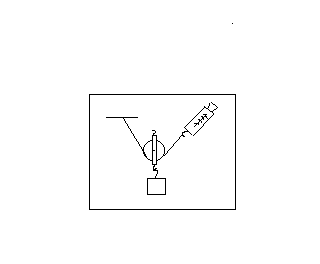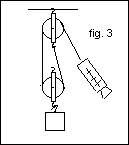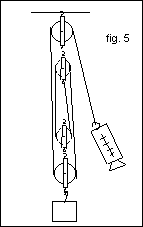Name_____________
Date______
Period____
Ms. Schlott/Science 8
Pulley Lab
Objective:
To be able to measure how much work pulleys save us.
Materials: Ringstand With Ring, String (about 1.3meters), Weight, 4 Single Pulleys, Newton Spring Scale.
Directions:
- Read all insturctions before you begin the lab experiment.
- Tie a loop into each end of the string so that the pulleys can be hooked to the string.
- Weigh the metal weight using only the Newton meter. Enter this amount into the Weight column of the data table.
- Assemble the single fixed pulley as shown in figure 1. Measure the amount of effort needed to lift the weight. Enter this amount into the data table.
- Assemble the single movable pulley as shown in figure 2. Measure the amount of effort needed to lift the weight. Enter this amount into the data table.
- Assemble each of the other three arrangements and record the data into the data table.
- Calculate the mechanical advantage (M.A.) for each pulley arrangement and record these numbers in the data table.





Questions:
- Using the diagrams calculate the MA of figures 3, 4 and 5.
- Was there a difference in the mechanical advantages that you calculated for the single fixed pulley and the single movable pulley? If so, why was there a difference?
- As you added pulleys to the system, what happened to the amount of effort need to raise the mass?
- Look carefully at the string pattern around the pulleys. Find the relationship between the pattern and the MA. Using only 4 pulleys, draw an arrangment of pulleys that has a MA of 5.
- When using a simple machine, you use less force. What do you have to do more of in exchange?
Pulley
Arrangements |
Weight (N)
All weights are the same |
Effort (N) |
Mechanical
Advantage
Weight/Effort |
single fixed
(fig 1) |
|
|
|
single movable
(fig 2) |
|
|
|
single fixed,
single movable
(fig 3) |
|
|
|
double fixed,
single movable
(fig 4) |
|
|
|
double fixed,
double movable
(fig 5) |
|
|
|
Return to: Physical Science on the Web




